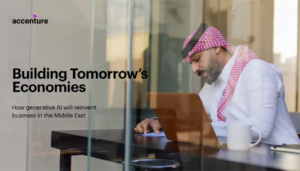
Show caption People demonstrating against the government during a protest in Havana, in July. Photograph: Alexandre Meneghini/Reuters Books Cuba review: American history of island neighbor is telling and timely As Ada Ferrer writes, ‘Cuba – its sugar, its slavery, its slave trade – is part of the history of American capitalism’ Carrie Gibson Sat 4 Sep 2021 07.00 BST Share on Facebook
Share on Twitter
Share via Email
In July, the eruption of unexpected protests in Cuba, sparked by food shortages and growing frustration with the government, unsurprisingly met with a corresponding flood of commentary from its opinionated neighbour.
People in the US called for everything from sending troops to supporting the communist regime, with the general tone of debate indicating that the public perhaps didn’t have the strongest grasp on the long and tangled history of the US and Cuba.
The timing is therefore ideal for Ada Ferrer’s important new book, which traces this complex story. However, rather than putting geopolitics or “great men” at the heart of the book, Ferrer’s focus is on the Cuban people, the descendants of whom are calling for libertad. Her aim is to provide a mirror in which US “readers can see their own country refracted through the eyes of another”.
Ferrer, a historian at New York University, starts by describing her own “heavy inheritance”. She was born in Cuba in 1962. In 1963 her mother took her to New York, where her father was living. Her mother had to leave behind a nine-year-old son from a previous marriage. Ferrer, like thousands of others, would feel the full tension of the US-Cuba relationship in the very fabric of her family.
From there, Ferrer turns to the island story, packing five centuries into concise chapters brimming with vivid detail and terrific page-turning momentum. She starts with the establishment of the first Spanish settlement in 1511, explaining how Cuba became an important stopover for the annual treasure fleet. By the 18th century, its impressive defences and strategic location enticed the British to capture and occupy “the Havannah” from 1762 to 1763 – an incident long erased from Britain’s collective memory, if it was ever there in the first place. Also often forgotten is Cuba’s crucial role in the American struggle for independence, as Spain channelled money and troops through the island to support the revolution.
As history makes people, so do people make history
By the late 18th century, the contours of the relationship with the US were clear. Cuba’s economy had been transformed by the collapse of sugar production in Saint-Domingue during the Haitian revolution, between 1791 and 1804. Investment in Cuban sugar soared, as did the number of enslaved people brought to the island.
Sugar and slavery bound Cuba and the US together. Ferrer is clear on this: “Cuba – its sugar, its slavery, its slave trade – is part of the history of American capitalism.” One telling example could be found in March 1853, when the newly elected vice-president, William Rufus King, running mate of President Franklin Pierce, was sworn into office from the Ariadne sugar estate in Matanzas, Cuba. King was an Alabama slaveowner, convalescing in Cuba from the tuberculosis that killed him the following month.
That decade also saw failed plots to annex Cuba – still a Spanish colony – to the slaveholding US south, but the American civil war ended such schemes. Soon after, in 1868, Cubans began an unsuccessful 10-year war for independence. Slavery ended first – if not until 1886 – but colonialism lingered on.
José Martí, who spearheaded the final push for independence in 1895, realised that racial harmony would be crucial for an independent Cuba. He had lived in exile in the US and had been troubled by the racism he saw. Martí died in battle, and the conflict was subsumed by the Spanish-American war of 1898. Instead of independence and equality, there was a US occupation until 1902, and again between 1906 and 1909, which brought with it meddling in education and voting systems as well as a wave of bankruptcies exploited by US investors.
The final insult was the 1901 Platt amendment, which allowed the US the right to intervene militarily in Cuba, a surrender of sovereignty that lasted until 1934. It wasn’t “outright colonialism”, Ferrer notes, “but something close to it”.
Dancers in colorful costumes perform in a street in Havana, a tradition established in colonial times that gave slaves one day a year to freely celebrate in the streets with dance and drums. Photograph: Javier Galeano/AP
In the early years of the Cuban republic, sugar boomed thanks to favourable US tariffs. But the main beneficiaries were foreign landowners. There was also wide social unrest. One chapter in the long-running Afro-Cuban struggle for equality ended with the brutal suppression of the Independent Party of Color (PIC) in 1912. By the 1930s there were strikes – also met with repression. Throughout this period, tourists – many from the US – flocked to the island, seeking a good time.
Fidel Castro, mercifully, doesn’t enter Ferrer’s story until about halfway through the book. There is, of course, no telling the history of modern Cuba – or indeed, the modern US – without him. But he can take up all the oxygen.
Ferrer recounts his rise while balancing it with the larger social forces he was able to harness. As she observes, “only if we read history backward can we imagine that the revolution was Fidel Castro’s from the start.” In its early days, the revolution was popular because the public believed it could have an active role in shaping it. Despite its social progress, in economic matters Cuba was still in the 19th century, dependent on sugar. Hundreds of thousands of Cubans voted with their feet and transformed the sleepy beach town of Miami into one of the most powerful US cities.
The final part of the book brings the story up to the present day, through the collapse of the Soviet Union, the thawing of relations in the Obama era and their re-freezing under Trump. This summer may well mark another turning point.
“As history makes people,” Ferrer concludes, “so do people make history.” Whatever history Cubans make for themselves – and in their relationship with the US – it will doubtless be a gripping next chapter.




